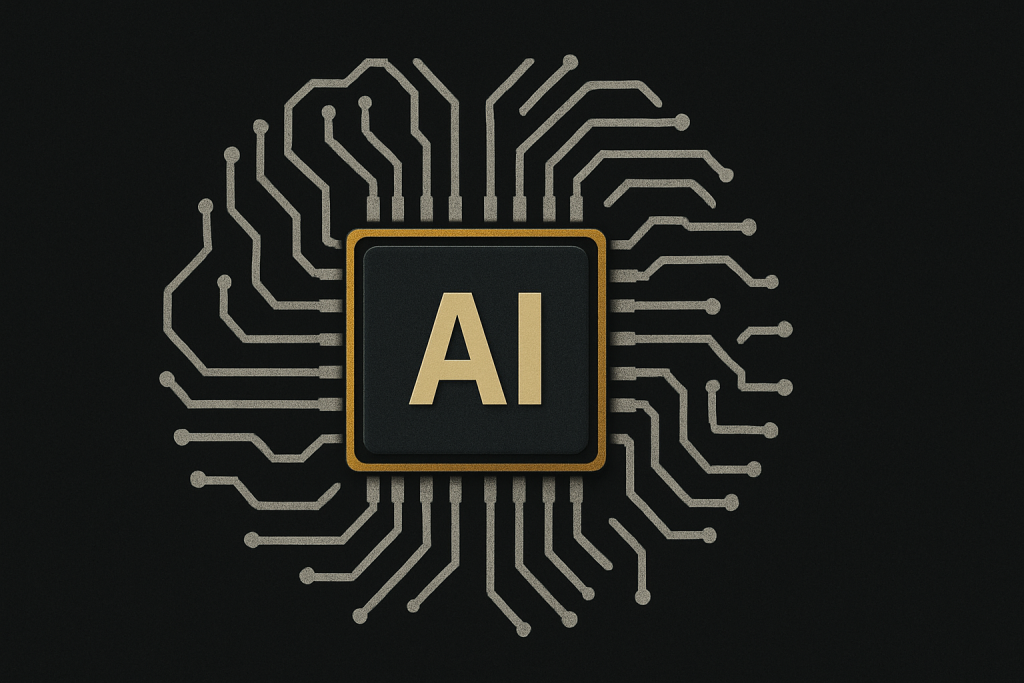What happens when AI doesn’t just answer questions, but questions the questions? The most advanced models no longer limit themselves to completing text or following instructions. AI reasoning models can analyze a problem, critique their own response, and improve it before presenting the final result.
Less than two years ago, ChatGPT amazed the world by completing emails and writing basic code. Today, models like o3 Pro act as strategic consultants capable of detecting flaws in reasoning, suggesting alternative frameworks, and sustaining 25-minute conversations about complex problems.
The difference isn’t just speed or accuracy: now AI can think collaboratively, not just execute tasks.
The breakthrough we’ve been waiting for
AI’s evolution over recent years has been exponential. What we’re seeing now isn’t just incremental improvement: it’s a fundamental shift in how machines process and generate knowledge.
To understand the magnitude of this change, we need to look at how AI has evolved:
- 2018-2022: Models completed text brilliantly. GPT-3 revolutionized automated writing, but it was essentially very sophisticated autocomplete.
- 2023-2024: “Chain-of-Thought” reasoning arrived (thinking step by step). Models learned to show their reasoning process, which dramatically improved their performance in math and logic.
- 2024-2025: Reasoning models changed the game. o3 Pro, Gemini 2.5 Pro, and others no longer need instructions to think step by step. They know how to do it. And even better: they can critique their own reasoning and improve it.
The difference is subtle but revolutionary. Before, we’d say “solve this step by step.” Now we say “think, critique your answer, and improve it.” It’s like having a collaborator who not only helps but reviews their own work before submitting it.
Three engines driving everything

Current AI advances didn’t emerge from nowhere. Three specific innovations are converging to create this new generation of models that can genuinely reason. Each addresses a fundamental limitation of previous systems.
1. Massive context windows
If GPT-3 could read about 3,000 words, o3 Pro processes the equivalent of several short books at once. This isn’t just “reading more”: it’s being able to analyze complete documents, find complex patterns, and create syntheses without losing the thread.
2. Refinement chains: the continuous improvement cycle
Instead of giving a direct answer, the most advanced models follow a three-step process:
- Initial draft: First response to the problem
- Self-critique: The model examines its own response, looks for inconsistencies, and identifies weak areas
- Refinement: Rewrites only the problematic parts
3. Cognitive choreography: AI as thinking partner
This is perhaps the most interesting innovation. Instead of using AI to summarize or automate, we can now use it to amplify our thinking. AI becomes a facilitator that helps us discover connections we couldn’t see.
Current limitations
Despite impressive advances, it’s crucial to maintain a realistic perspective on current limitations. Recognizing these limits doesn’t diminish the technology’s potential, it helps us use it more effectively and responsibly.
Before getting too excited, we need to be clear about current limitations:
- Convincing hallucinations: Perfect reasoning about invented data is still false. Always cross-check with external sources.
- Inherited biases: If training data has biases, the strategy will too.
- Cost and latency: Deep thinking consumes more tokens and time. Not for simple tasks or critical real-time applications.
- Incomplete common sense: Still stumbles on everyday questions a child would solve effortlessly.
How to leverage advanced reasoning
The key to getting maximum benefit from these systems lies in understanding when and how to use them. It’s not just about asking the right questions, but creating the right conditions for deep reasoning to unfold effectively.

Choose complex problems
Don’t use o3 Pro to write an email. Better to use it for research synthesis, strategic planning, or market analysis. It’s like using a Ferrari to go to the grocery store: it works, but wastes potential.
Provide structured context
Organize information in tables, clear sections, and explicit objectives. AI reasons better when it has structure to work with.
Ask for self-critique
Instead of asking directly, use instructions like: “Analyze this problem, then critique your analysis and improve it.” This simple change can double response quality.
Iterate with feedback
Each user response helps fine-tune the model. If something doesn’t convince you, explain why and ask for a new version.
Verify with other sources
Never trust blindly. Cross-reference information with databases, experts, or prior knowledge.
Shift the paradigm
This is the real qualitative leap: moving from “How can AI make my work faster?” to “What new ways of thinking become possible when humans and AI collaborate?”
Also check: Also check: GPT, Claude, and Gemini — What 2025 Usage Data Really Says
Toward abundant intelligence

Economic changes in AI access are creating a new paradigm where high-level strategic thinking becomes democratically accessible. This transformation has profound implications for how intellectual power is distributed in society.
The most advanced models aren’t just better: they’re significantly cheaper. o3 Pro costs 87% less than its predecessor (o3) while offering superior capabilities. We’re seeing the first signs of what experts call “abundant intelligence.”
The competitive advantage won’t go to those who use AI most efficiently, but to those who develop the most sophisticated cognitive abilities to think with AI. Each new model isn’t just a better tool: it’s an invitation to expand our intellectual repertoire.
Your next step
If you have access to o3 Pro, Gemini 2.5 Pro, or similar models, don’t waste them on routine tasks. Find a real problem you’ve been struggling to solve, provide abundant context, and let unexpected connections emerge.
The question isn’t whether AI will change how we think. It already is. The question is whether you’ll develop the skills needed to leverage that transformation.
The era of deep reasoning in AI has already begun. Are you ready to be part of it?
